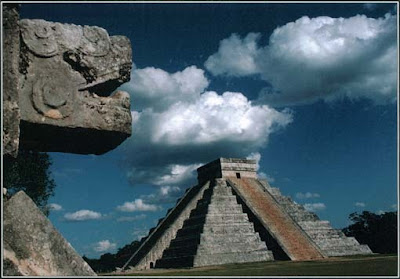
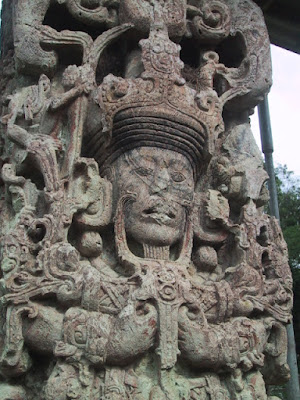
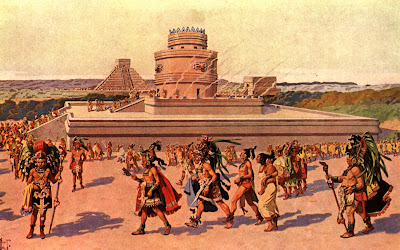
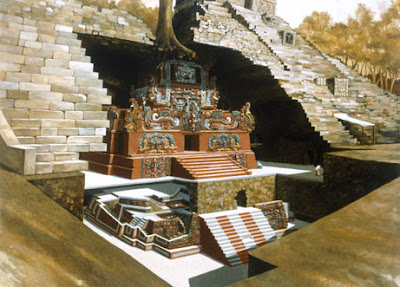
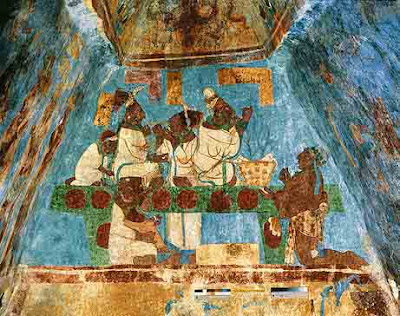
Scholars have long puzzled over the Maya civilization's rise to glory and fall to ruin. The latest thinking is that a man named Fire Is Born made the Maya great. But no one person or problem caused the collapse. Simply put, everything went wrong.
The Kingmaker
THE STRANGER ARRIVED as the dry season began to harden the jungle paths, allowing armies to pass. Flanked by his warriors, he marched into the Maya city of Waka, past temples and markets and across broad plazas. Its citizens must have gaped, impressed not just by the show of force but also by the men's extravagant feathered headdresses, javelins, and mirrored shields—the regalia of a distant imperial city.
Ancient inscriptions give the date as January 8, 378, and the stranger's name as Fire Is Born. He arrived in Waka, in present-day Guatemala, as an envoy from a great power in the highlands of Mexico. In the coming decades, his name would appear on monuments all across the territory of the Maya, the jungle civilization of Mesoamerica. And in his wake, the Maya reached an apogee that lasted five centuries.The Maya have always been an enigma. Decades ago the glories of their ruined cities and their beautiful but undeciphered script had many researchers imagining a gentle society of priests and scribes. As epigraphers finally learned to read the Maya glyphs, a darker picture emerged, of warring dynasties, court rivalries, and palaces put to the torch. Maya history became a tapestry of precise dates and vividly named personages.But deep mysteries remained, among them what spurred the Maya's final leap toward greatness. Around the time Fire Is Born's fame was spreading, a wave of change swept the Maya world. What had been a collection of inward-looking city-states expanded their ties with their neighbors and other cultures and reached the heights of artistic achievement that define the Classic Maya period.New clues, unearthed from overgrown ruins and teased from newly deciphered texts, point to Fire Is Born as a central figure in this transformation.
Though fragmentary, the evidence that has emerged over the past decade suggests that this mysterious outsider remade the political leadership of the Maya world. Mixing diplomacy and force, he forged alliances, installed new dynasties, and spread the influence of the distant city-state he represented, the great metropolis of Teotihuacan near present-day Mexico City.











